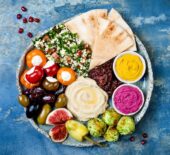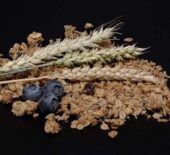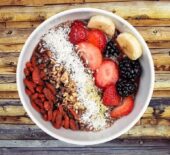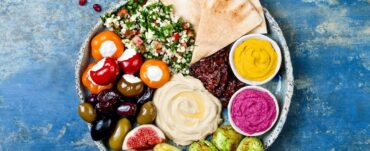Do you want to be able to feel fuller for longer and help manage your weight? Then make fibre your daily friend!
Fibre comes in three main types:
- Soluble Fibre
- Insoluble Fibre
- Resistance Starch
Each type of fibre plays a different role in your body to help maximise the effect of fibre as a whole unit. So what does each type of fibre do?
Soluble Fibre
This type of fibre helps to decrease the ‘bad’ or LDL cholesterol in your blood and helps glucose (sugar) to be managed in your body. Soluble fibre also acts as a prebiotic and feeds the bacteria in your gut to keep it healthy.
Soluble fibre helps to bulk up your poo and to make the toileting experience pleasant rather than feeling like you are passing something with consistency which feels like a cactus. This type of fibre can be found in foods like peeled fruits and vegetables without their seeds or stalks, also in legumes/beans, oats and barley.
Insoluble Fibre
No one likes to be constipated and this type of fibre keeps you a regular customer to the bathroom. Insoluble fibre is found in the parts of the food which are not digestible by the body, so they pass through you. The skins of fruit and vegetables, whole grains like multigrain bread (the more seeds you can see the better), brown rice and pasta, couscous and wheat bran.
Resistant Starch
This is the type of fibre which has been front and centre in the media. Resistant starch promotes the development of the health promoting bacteria in your gut. This type of bacteria is supported in research to help improve your immunity, keep a healthy metabolism which ultimately leads to you having a healthy weight as well as improving your mood. 70% of the serotonin or the 'feel-good' hormone is made in your gut. Ultimately if your gut microbiome is happy so are you!
What happens when your health promoting bacteria are taken over by more ill health promoting microbes? This leads to you getting sick easily, a slower metabolism, increased allergies and autoimmune diseases like arthritis.
Where can you find this fuel for health?
- Unripened bananas
- Onions
- Green and black tea
- Cooked and cooled wholegrain pasta, potatoes, and rice and wholegrain varieties.
How much fibre a day do you need?
To keep your body working like a well-oiled machine it is recommended to have 25g - 38g of fibre a day.
Tips to making sure you are getting enough fibre:
- Read the food label on your cereal box
Aim to select foods which have 3-6g of fibre per serve.
- Eat the whole grain not the refined stuff
This means for most adults over the age of 18 and under 50 years to eat 6 serves of whole grains a day, try replacing white and refined breads, rice and pasta for multigrain bread and brown rice or pasta.
- Substitute a meat dish for legumes
Legumes/beans like kidney beans (yes baked beans count), chickpeas and lentils are not only fantastic for your guts but eating less meat, especially red and processed meat can reduce your risk of cancers like colorectal cancer. An additional benefit is you are doing your small bit for planetary health and reducing your carbon footprint (karma bonus).
- Get your 2 and 5
Roughly 4% of people are eating the recommended 2 serves of fruit and 5 serves of vegetables daily. Eating enough fruit and vegetables each day may help decrease your risk of developing lifestyle diseases like type two diabetes and cancer and also helps you to meet your daily fibre needs. Keeping the skin on fruits and vegetables increases the amount of insoluble fibre your body receives as well as adding some extra crunch and flavour. Try bringing a banana to work instead of choosing the banana bread, adding some fruit to some low fat yoghurt as a snack or dessert, mixing in vegetables to pasta dishes or rissoles (yes you can hide them if it means you eat them) or choosing more vegetables to add to your sandwich.
- Go nuts for nuts and seeds!
30g of nuts and/or seeds, which is about a small handful, is a great source of many healthy vitamins and minerals for your body, including healthy fats, protein and fibre to keep you feeling fuller for longer. There has been research which supports eat a small handful a day to help decrease the size of your waistline. Try the unsalted variety to help your blood pressure but any nut is a good nut!
Take Home Message:
Getting 25g - 38g of fibre a day is manageable by selecting a variety of whole foods. Not only will these foods provide you with the fibre your body needs but also improve your health in other ways and help you get the most out of your day and keep your body running like a well-oiled machine.








